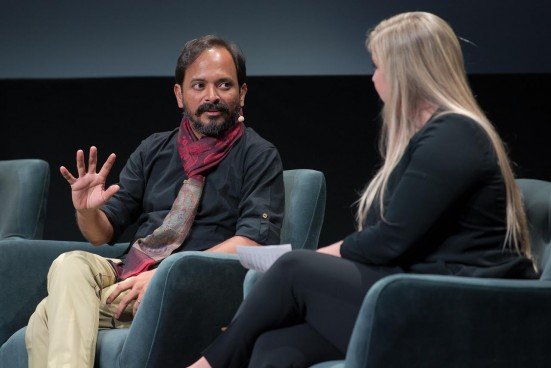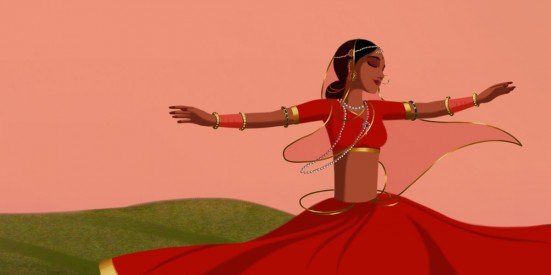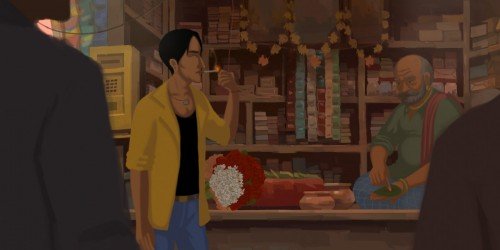
Mayank Patel
Mayank Patel is a technical producer for Paperboat Design Studios and his film Bombay Rose, which was directed by Gitanjali Rao, featured at the Toronto International Film Festival (TIFF) 2019. Patel is from Surat and began his career in animation in Hyderabad where he worked for three years. After that, he came to Mumbai and co-founded Paperboat Design Studios. The studio previously re-adapted Satyajit Ray’s film Goopy Gyne Bagha Byneinto an animated feature, which was shown at TIFF previously. Patel gives us Minority-Review’s Swati Sharan a sneak peek into the behind-the-scenes of his career, films and the Indian animation world.
Is film animation a good career option in India?
Animation is growing in India right now. There are so many web series, TV series and cartoons that are being produced. Channels like Nickelodeon, Disney and Discovery Kids are all producing a lot of series right now. There are quite a few studios in India producing them very well. People think that it’s only 3D animation but it’s not like that. 2D animation is also happening. They are getting the same salary as the 3D guys. People are just not aware of it. So, animation is a great avenue for film students to pursue.
Wouldn’t they choose to study abroad though?
Paperboat has a lot of interns. There’s a few who wanted to go for further studies abroad. There’s a difference in these people. The students who wanted to do a specialisation in, for example, character or concept or want to learn a filmmaking course, they are going abroad to learn animation in more detail.
In Bombay Rose, what was it like trying to recreate the sights and sounds of Mumbai for the big screen?
Because the whole script is set in a Mumbai locality each and every location is like the real Mumbai. Living and working in Mumbai, the city is in our blood. We know how Chowpatty (the beach) looks and how the Dadar Phool Market (flower market) looks and each and every place has its own aesthetics. They have their own colour palette and culture. We actually went to the places and shot photographs and took videos for references. Then we started painting them. We converted real life locations into our paintings. This is how each and every location has been brought to life.

A still from Bombay Rose
Do you feel that sometimes the requirement for screenplay writing can clash with the visual medium?
(Laughing) I don’t know how to start with this point because I believe India needs good scriptwriters. India is actually a ‘Bollywood zone’. Writing for an animation film and a live action film is completely different. Unfortunately, we don’t have good animation writers in India. In this type of writing you have to imagine the character and how you’re going to animate and how the relationship is going to be built.
How does the animation industry work in India? If someone is coming out of college and decides to get into animation, how might you recommend they try it?
Animation itself is production work. It’s a very creative field. It’s a God-gifted skill. Only then can you produce good animation. You need to have that creative instinct inside of you. You are creating a different product when you are an animator, whether it’s one shot or one film. Both have to be approached in the same way. So, the person coming from an institute who wants to join a studio and pursue a career in animation should be prepared to devote a lot of time to this. It’s when he’s spent 4-5 years in animation that he learns the real stuff.
For the guy who is coming from overseas to India, I would say we are at par with studios like Disney, but we are different. We want to do more culturally relevant animation and build our own culture. There are a lot of animators from the Philippines and from the U.S. and some from China; they are coming to India and working in studios. We need quality people because India doesn’t have a good animation college. It’s always a benefit if you have learned animation overseas and come to India. Studios here are always looking for talent. What you’ve learned in your institute and how you can implement it in your production is what the studio wants.
In terms of what we have made, this is our second film to be featured at TIFF. The first film we made was Goopy Gyne Bagha Byne. That was completely different; it was independent. People like us want to make different kinds of films. Of course, we are still welcoming all the Hollywood artists and voiceover artists to come to India so we can produce new kinds of films.

A still from Bombay Rose
When does Bombay Rose release in India?
We are still in the process of buying and selling so we don’t know yet. Right now, they are taking the film to all the festivals. Then it’s completely the producer’s call when they want to release it here.
In your career, how much support have you gotten from people around you?
Always. For animation, you always need the help of seniors. In India, we have a lot of artists who work in the studio and they teach us a lot. When you join an animation studio, they like to teach you. Ours is a very small industry; we want to grow the industry. So, we teach a lot of people. Even at Paperboat, we always educate our team about storyboards and animation and inspire them to learn new things.



0
comments